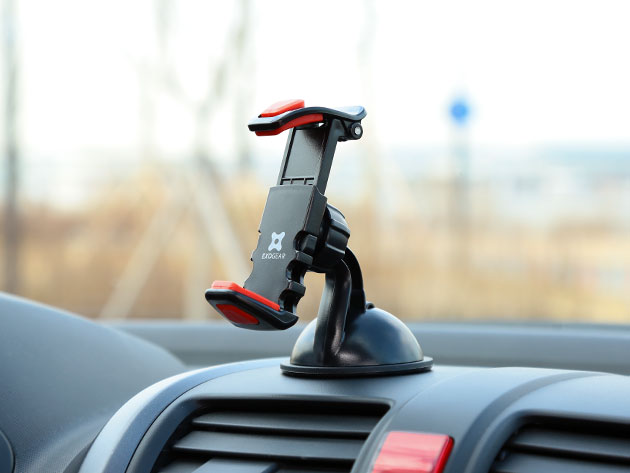Qualcomm is a major company in the Android smartphone market. Not only does the company design the SoCs that make their way in flagship, mid-range, and budget smartphones, but it also designs and sells modem chips, which make it possible for smartphones to connect to wireless cellular data networks. It’s been noted before that Qualcomm earns the majority of its revenue not from selling smartphone system-on-chips (SoCs), but from patent licensing. Qualcomm is heavily involved in the cellular world; to a large extent, it was responsible for developing the CDMA2000 standard (it has much lesser clout in 3G WCDMA), and it also has patents in 4G LTE. It wants to be just as heavily involved as the industry moves to 5G. The trouble here is that Qualcomm’s practices are consistently anti-competitive, which is why the company has been battling with China, Taiwan, South Korea, the European Commission, and has lost a case to the US FTC, before winning an appeal. Separately, it fought a years-long case with Apple before reaching a settlement. Now, the EU has opened another investigation into Qualcomm, this time for its front-end radio-frequency (RFFE) chips.
This news comes after Qualcomm’s Q1 2020 financial report. It reported a 13% fall in profits but still managed to exceed analysts’ expectations. It also reported in a regulatory filing, however, that it’s under investigation by the European Commission to ascertain whether it engaged in anti-competitive behavior by leveraging its market position in 5G modem chips in the radio frequency chip market. The Commission has now confirmed to TechCrunch that it is investigating Qualcomm.
Radio frequency front-end (RFFE) chips
Qualcomm has spent years battling regulators and has paid billions of dollars in fines over allegations of anti-competitive patent licensing. As noted in the first paragraph, it lost a case to the FTC over this issue, and is currently appealing. This present issue is related to RFFE (radio frequency front-end) chips. Qualcomm supplies modem chips, also known as baseband processors, to device makers. The Snapdragon X55 discrete modem is an example. It’s meant to be paired with the Qualcomm Snapdragon 865, which has no integrated modem.
On the other hand, the radio frequency front end chips are different. In simple terms, they are the link between the modem and the phone. Qualcomm’s website states that they consist of power amplifer modules, power trackers, diversity receive module, antenna tuning solutions, low noise amplifier, filter products, the RF switch and switch module, and more. These chips have become more complex in 5G phones as it’s more difficult to design a 5G phone, particularly if a device maker wants to incorporate millimeter wave 5G. The QTM525 and its predecessor QTM052 mmWave antenna modules are also an example of RFFE chips. These chips have been used in Snapdragon-powered mmWave 5G phones, such as the Samsung Galaxy S10 5G and the Samsung Galaxy Note 10+ 5G. In mmWave, Qualcomm is the dominant player so far, as vendors such as Huawei’s HiSilicon and MediaTek haven’t released modems with mmWave yet. Samsung is the only other major vendor selling modems with mmWave 5G support.
The issue is that Qualcomm has been trying to persuade phone makers to buy RFFE chips together with its own modem chips, instead of selecting parts from separate vendors and integrating them. This is an anti-competitive move, designed to increase barriers to competition and make Qualcomm’s standing dominant in the 5G market.
The other major suppliers of RF chips are Broadcom, Skyworks, and Qorvo. (It’s worth noting that the Huawei Mate 30 series uses 5G RF chips from non-US suppliers to avoid violating the trade ban.)
The implications of the investigation
Qualcomm has itself said that revenue from the radio frequency market contributed to a sales forecast that beat analyst expectations. It has won radio frequency chip contracts with Samsung, Google, and LG, among others. In the regulatory filing, it said it was in the process of responding to the European Commission’s probe. According to the company, the Commission could impose a fine of up to 10% of its annual revenue if a violation was found. In itself, that’s actually not a big deal. Qualcomm has been fined twice by the Commission in the past. In July 2019, it was fined €242 million, while in July 2018, it received a €997 million fine. Again, it’s locked in appeals over both decisions.
The big change would come if the European Commission’s actions force Qualcomm to change its behavior. Qualcomm has been promoting its modem-RF system for the Snapdragon X55, which will be used by over 30 device makers. If the Commission ruled that Qualcomm has to separate its modem and RFFE chips and not sell them bundled, for example, then the logical conclusion was that it would be device makers who would have to pay up the extra cash as the two necessary components wouldn’t be bundled together. Samsung Systems LSI’s Exynos chips aren’t a proper substitute because the latest flagship chips are only used by the company’s mobile division. HiSilicon only makes phones for Huawei phones, while MediaTek is primarily known for operating in the low-end and mid-range segments, instead of the flagship segment of the smartphone market. MediaTek wants to change this, and things can change. Up until now, though, there have been no good alternatives to Qualcomm.
It should be equally clear that device makers will quickly pass on the additional cost to the end consumers, who have been dealing with the skyrocketing increase in flagship smartphone pricing. 5G phones are already extremely expensive. The Galaxy S20 Ultra 5G, for example, is rumored to cost $1,300+ in the US. The cheapest 5G phone by a well-known device maker in China costs the equivalent of $360. Antitrust regulators have to do their job, and ultimately, if the facts are proved, Qualcomm will have to change its behavior. We will continue to keep our eyes on developments in this space.
Source: Reuters
The post The EU has opened an antitrust investigation into Qualcomm for its radio-frequency chips appeared first on xda-developers.
from xda-developers https://ift.tt/2OAw9y9
via
IFTTT
 This will be the first time Xiaomi is launching a flagship phone without gathering members of the media to attend a physical press conference. The online-only event will take place on February 13th, two days after Samsung launches the Galaxy S20 series in San Francisco. Xiaomi thus won’t be able to claim they’re the first to launch a product on Qualcomm’s new Snapdragon 865 platform, though neither can Samsung if you count ZTE’s quiet launch of the Axon 10s Pro. In any case, the launch of the Mi 10 series will be interesting to observe because of Xiaomi’s history of undercutting its competitors. Few details have been confirmed about Xiaomi’s new flagships besides the fact that both devices will feature the Snapdragon 865 and LPDDR5 RAM sourced from Micron and Samsung. In addition, we expect both devices to feature 108MP primary rear cameras, and we also believe the higher-end Pro model will support 66W fast wired charging. We’ll be watching the event on February 13th to provide all the details on Xiaomi’s new Mi flagships, but we’ll also (hopefully) be on the show floor at MWC to bring you coverage of Xiaomi’s press event.
This will be the first time Xiaomi is launching a flagship phone without gathering members of the media to attend a physical press conference. The online-only event will take place on February 13th, two days after Samsung launches the Galaxy S20 series in San Francisco. Xiaomi thus won’t be able to claim they’re the first to launch a product on Qualcomm’s new Snapdragon 865 platform, though neither can Samsung if you count ZTE’s quiet launch of the Axon 10s Pro. In any case, the launch of the Mi 10 series will be interesting to observe because of Xiaomi’s history of undercutting its competitors. Few details have been confirmed about Xiaomi’s new flagships besides the fact that both devices will feature the Snapdragon 865 and LPDDR5 RAM sourced from Micron and Samsung. In addition, we expect both devices to feature 108MP primary rear cameras, and we also believe the higher-end Pro model will support 66W fast wired charging. We’ll be watching the event on February 13th to provide all the details on Xiaomi’s new Mi flagships, but we’ll also (hopefully) be on the show floor at MWC to bring you coverage of Xiaomi’s press event.





















